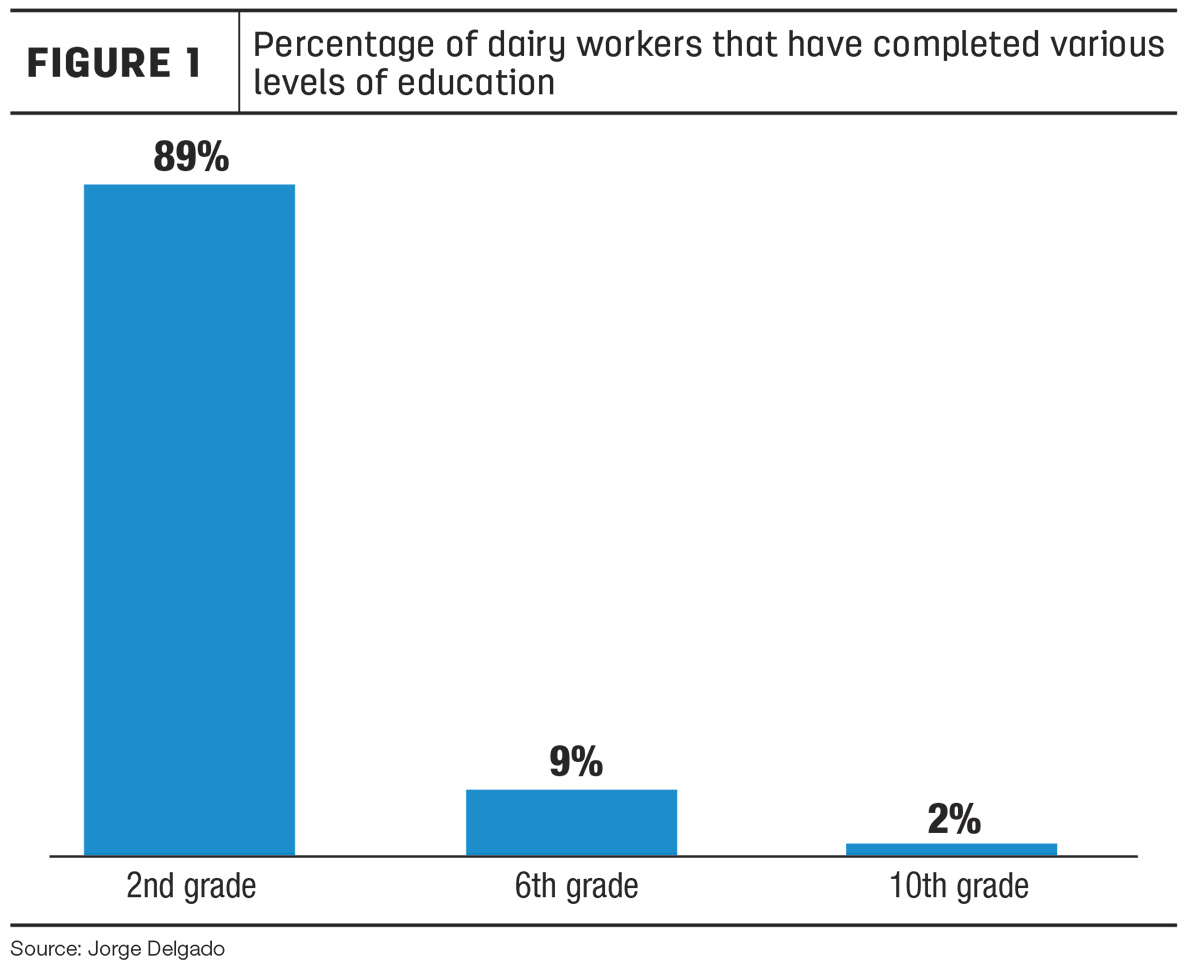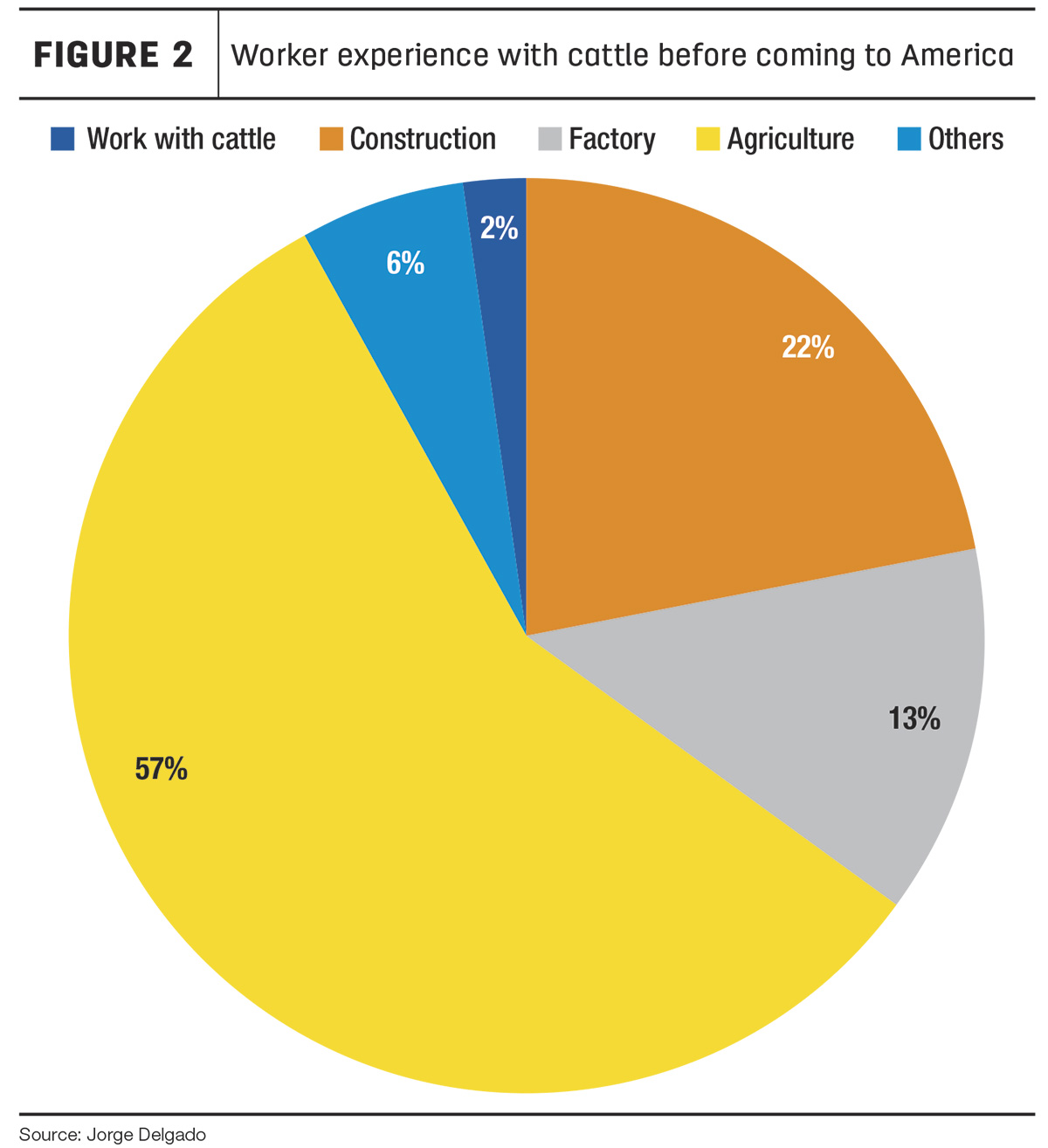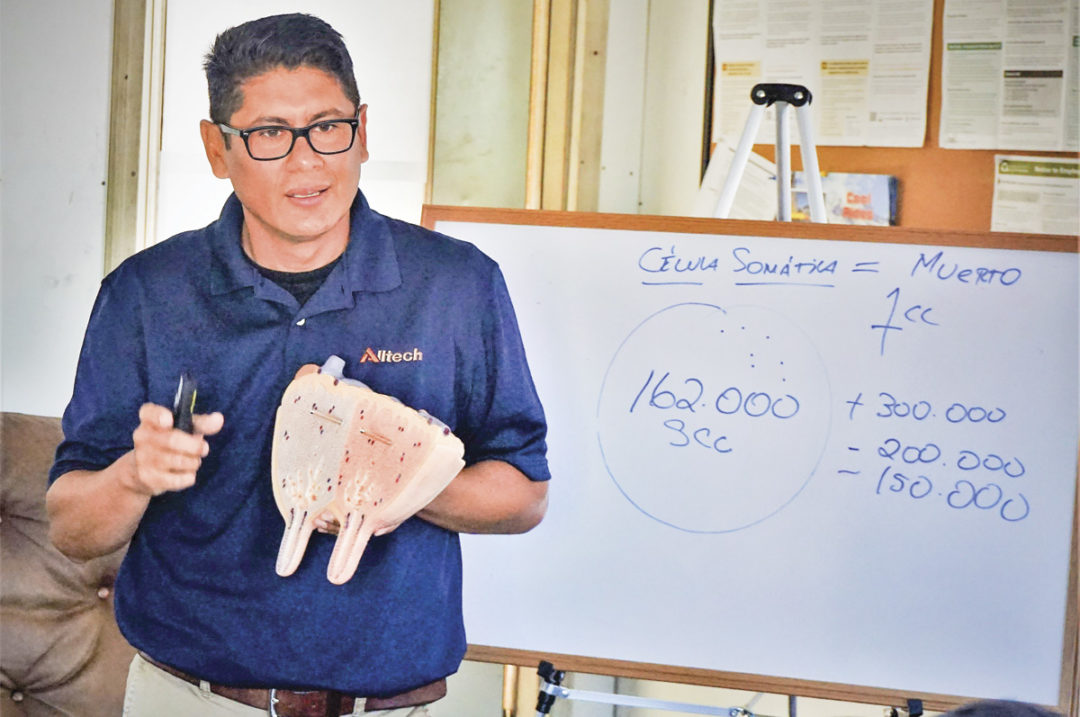How do you say "somatic cell" in a Mayan dialect?
As a nation that depends on immigrants and foreign labor to work in agriculture, the diversity of this population and their languages bring new challenges to the dairy industry. As a result, a dairy manager and/or supervisor will come across dairy workers with whom it is difficult to communicate due to a language barrier. Spanish has been a typical language barrier, and now there are different dialects as dairies source more employees from Central America, whose primary language is not even Spanish. As this new generation of dairy workers is coming to fulfill this big demand for labor in our industry, it is important to find ways to communicate that will help us overcome a language barrier and provide the best tools, especially when we do not speak the same language.
A dialect is a variety of a language shared by a group of people usually defined in terms of region and/or ethnicity that has some grammatical patterns and words that differ from the standard, as well as non-standard pronunciations. Many of the dairy workers who speak dialects are learning Spanish here in America with the help of their colleagues who have been here longer. So how can we communicate and train these workers so they are successful?
Many dairies across the U.S. have employees from Guatemala. Although the official language in Guatemala is Spanish, there are also 21 Mayan languages and two non-Mayan indigenous languages, Xinca and Garifuna. Some of these languages have different dialects, such as Poqomchi', Tz'utujil, Achi and Mam.
Besides the language barrier, another challenge is the level of education of these workers, as many of them have not completed elementary school (Figure 1). Think about it: When someone cannot read, they will be excluded from many of the things that will allow them to be fully functional workers. Workers who only speak a dialect will lack access to information and will tend to do more protocol drifting, making it difficult to be productive. So dairy managers should reconsider training methods and communication to use more visual and tactile tools in order to develop the right messages for these employees.

Keep it simple
If the worker is able to understand a limited amount of the other workers’ native language, make sure they are keeping the speech simple. Do not use slang terms and try to use full sentences that are short and concise. Long explanations or sentences are not as easy to translate. Make sure you or other co-workers speak in a clear and even tone, but do not speak too slowly or loudly, as this can be offensive. Never shout or exaggerate your syllables.
You can also try using pictures to communicate, if you are performing simple tasks. For example, show a picture of a cow with mastitis to explain the importance of a good milking routine. Keep posters with illustrations to help you explain protocols and procedures in place and be sure to speak and to look at them while doing this, even if you don’t speak the same language.
Keep these tips in mind while you’re talking
- Speak slowly and clearly. If you tend to speak rapidly, slow it down.
- Be patient and polite. Interactions with someone who doesn't speak your language can be frustrating, both for you and the other person.
- Do not laugh at the person, roll your eyes or anything else that you wouldn't do in polite conversation with someone who does speak your language.
- Don’t shout. Speak in your normal tone of voice.
- Paraphrase. Make your points and then repeat them, using other words to describe a topic that may be particularly difficult to understand.
- Use body language. Illustrate your key points by using body language. Remember to smile where appropriate. Make eye contact with the person you’re speaking to or with members of your audience.
Speaking a dialect or having a lower level of education does not mean your worker cannot read or write any words. Be respectful, empathetic and positive and try to think of it in terms of coaching versus teaching. In order to keep them motivated, part of your role as a dairy manager is to remind them that all of the positive information they are learning now will benefit them in the near future. Always remember to provide plenty of positive feedback.
Illiterate audiences tend to have “communication consultants” such as their relatives, neighbors, co-workers and friends who help them decode certain communication materials. Use these “consultants” as a resource to explain protocols and tasks on your dairy. Visuals – such as pictures, drawings, charts, graphs and diagrams – can be effective tools for communicating goals and benchmarks in your operation. Visuals like posters, short videos, simple PowerPoint animations, anatomical toys and dry erase boards with clear messages can make the presentation of complex information easier to comprehend and more attractive to these audiences.
Visual communication can benefit all audiences, especially people with lower literacy and numeracy skills. Remember, though, that visuals can’t speak for themselves. People can interpret visuals, just as they do words, in different ways. Therefore, choose visuals that support the main message and have clear headings, labels and captions.
The majority of the dairy workers coming to America to work on dairies do not have previous experience working with dairy cattle in their countries (Figure 2). So it is even more important to provide basic technical training when onboarding workers into your operation using audio-visual training materials and not only using other co-workers with experience.

There isn’t one magic solution to this problem. When I am training dairy workers who speak a dialect, I can see their frustration and lack of understanding when explaining basic presentations that contain new terminology for them. However, good work is being done on many dairies across the country that we can learn from. These workers, like many others in our industry, are eager to learn and bring their amazing work skills and passion to your dairy.







